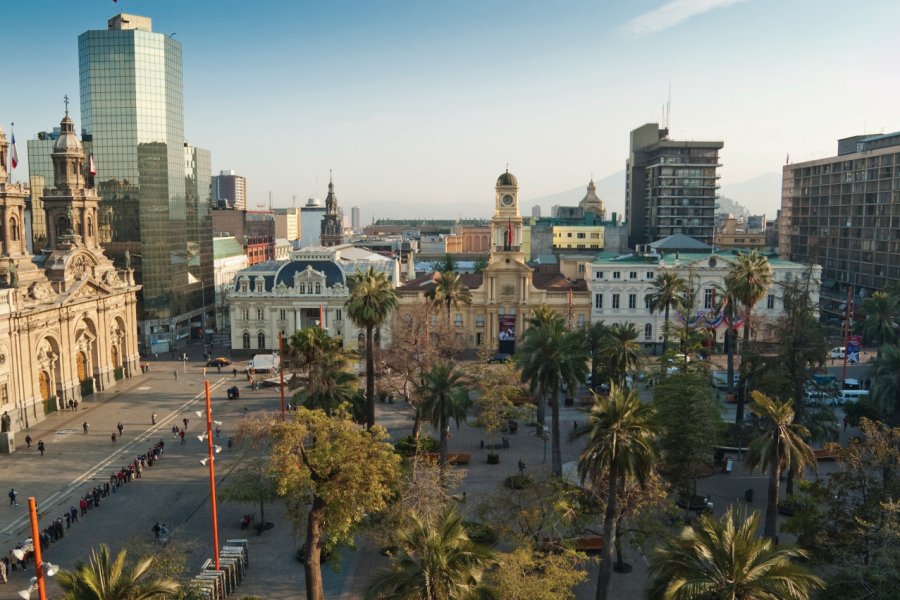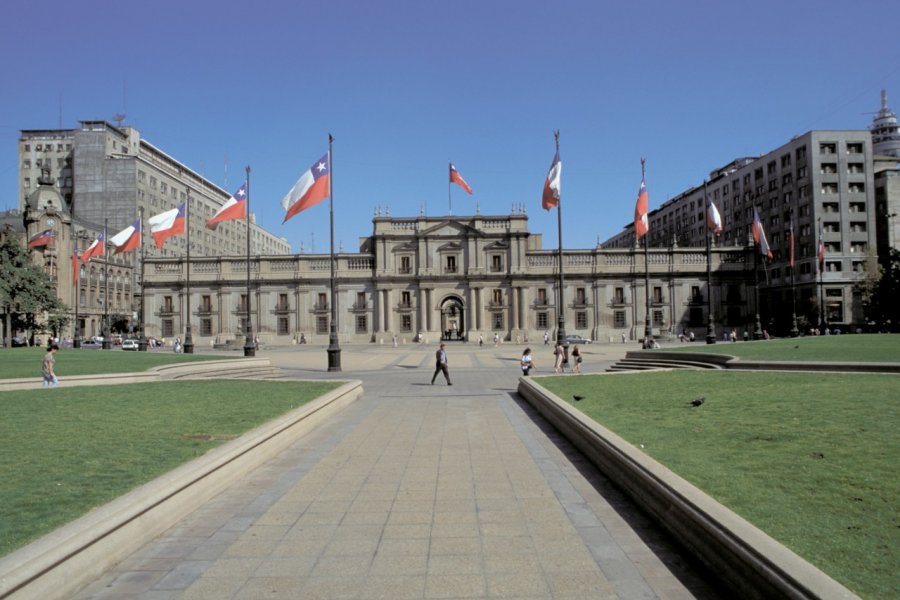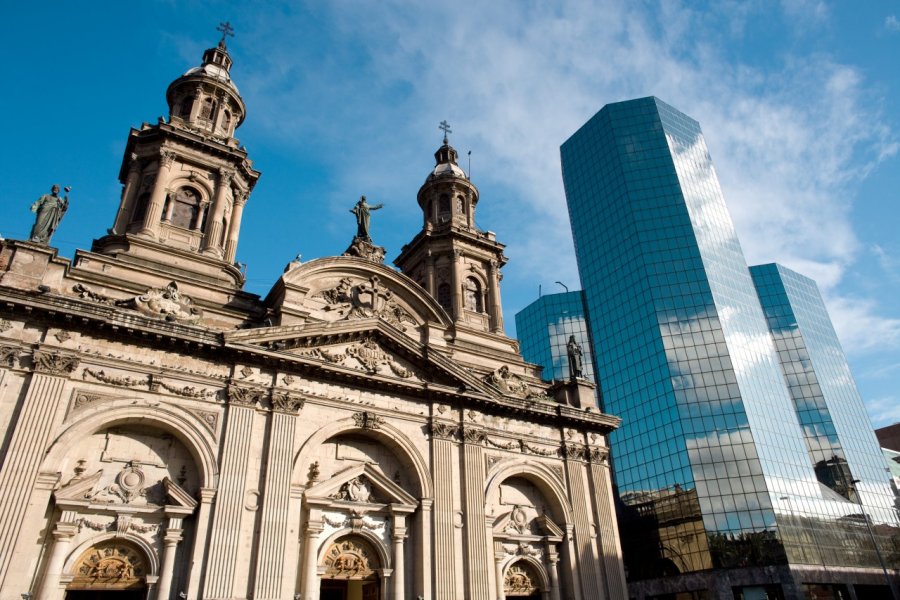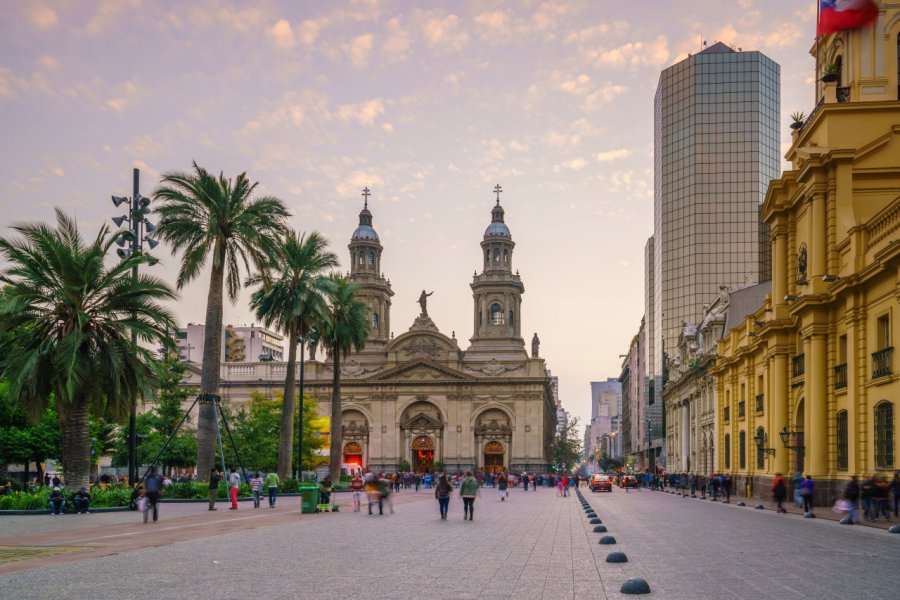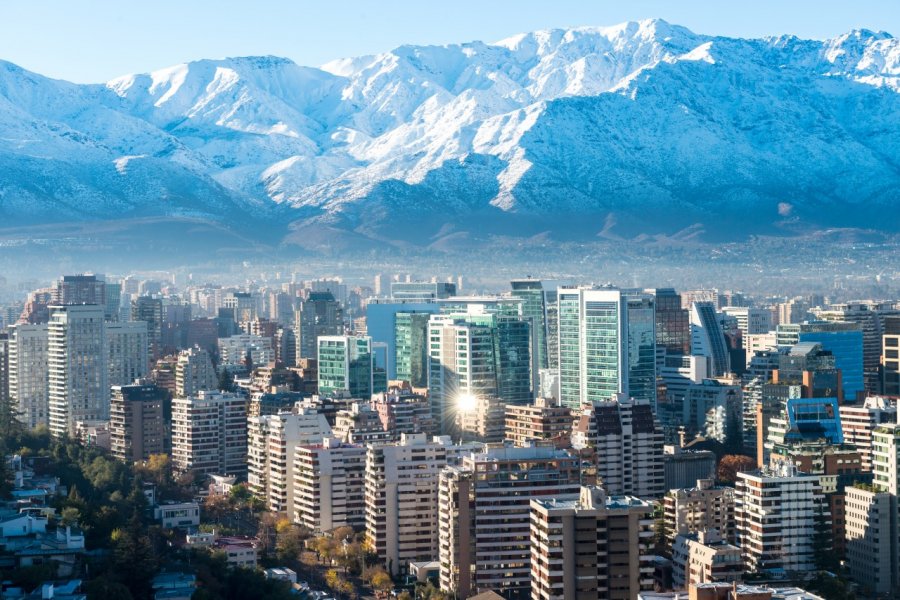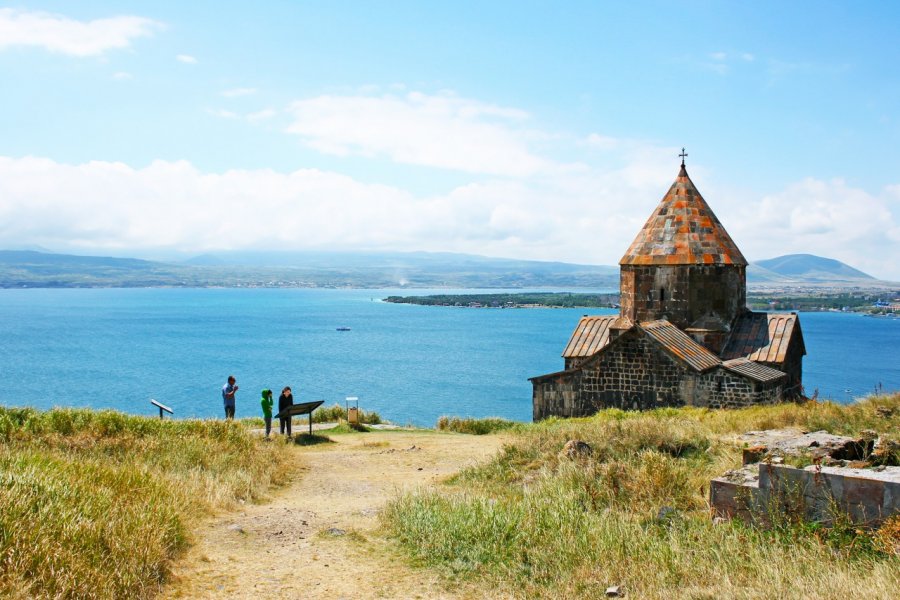Travel Guide Santiago De Chile
Find an accommodation
Advertising
Santiago de Chile: a name that smells like the antipodes and exoticism. However, many travellers are disappointed: an uninteresting architecture, an unpleasant pollution (in winter because there is no wind, and in summer because of the ozone), a chaotic and sickly urban frenzy... It certainly doesn't have the cachet of Rio de Janeiro, or even Buenos Aires. However, the capital of Chile (about 6.5 million inhabitants, i.e. 1/3 of the inhabitants of the whole country!) keeps a particular charm, in particular thanks to the presence of many parks and gardens and to a successful global "relooking" these last times. The hotel offer is excellent, the gastronomic menu varied and of quality and the museums and cultural centres abound. In the surrounding area, you can quickly reach the glaciers in the high and wild Andes. Wine lovers can discover numerous vineyards. And the seemingly simplistic geography of the country means that a traveller is almost bound to pass through it.Santiago marks the border between the North and the South: between the world of the mines, the raw, heroic lights, the work, the good-naturedness of the northerners; a peaceful and generous southern central valley, its colonial atmosphere and its wine aromas; and a colder, more reserved, practical and Germanic Deep South.Santiago de Chile is certainly not worth a prolonged stay, but it is today an essential stage to apprehend the country and to seize the essence of this capital at the confluence of the Latin and Western influences.HistoryOn February 12, 1541, Pedro de Valdivia ordered the construction of Santiago de la Nueva Extremadura; the plan was drawn in squares like a chess game, in the same measurements as those of Lima. "Santiago" for the name of its apostle, "Extremadura" for the region from which he came, "New" because the America offered to the Spaniards was, apart from a few massacres, virgin. It is undoubtedly the extraordinary site of this sunny valley, bathed by the Mapocho river and biting the snowy sides of the Andes mountain range, which decides the conquistador in his choice.But if the site is welcoming, the Mapuche natives are much less. Barely six months after the arrival of the Spaniards, they attacked them and almost managed to destroy the city. The Spanish troops took refuge initially on the hill Santa Lucía which dominates the city. They will be besieged there during more than two years. The reinforcements arriving from Peru will finally allow Valdivia to get rid of its besiegers and to rebuild the city. Little by little, the colony is fortified. However, only 700 Spaniards and a few thousand peasants and indigenous slaves lived in Santiago at the end of the 16th century. The large town was only an administrative centre, sometimes serving as a military base for incursions into Araucan (Mapuche) country, with most of the settler families scattered in the surrounding countryside.The city suffered for two centuries from Chile's commercial isolation, but also from the political predominance of Lima and then from the importance of the flourishing port of Valparaíso. At the beginning of the 1800s, the city had hardly more than 50,000 inhabitants. The great migration from the Chilean countryside in the second half of the 19th century precipitated the urban explosion. Masses of rural people, fleeing the misery and semi-slavery of the latifundos (landowners), hoped to find a better life in the nitrate mines of the north or in the capital. From 1865 to 1875, the population grew from 115,000 to more than 150,000! At the end of the 19th century, Santiago definitely took the lead over its rival Valparaíso and the rich families of industrialists and landowners built palaces of all styles: Italian, Spanish, French, etc. It was at this time that the intendant, Benjamin Vicuña Mackenna, transformed the cerro Santa Lucía into a public garden. He also played the role of a Chilean Haussmann by having the main avenues pierced.But it was really during the first centenary of independence that the city underwent major transformations. The electricity fairy comes to illuminate the 500 000 souls that already count Santiago. Numerous monuments (museums, train stations, etc.) were built; public gardens were created and the squares were adorned with fountains and statues. The city began to spread out on the slopes of the Andes, with the casitas of Barrio Alto, as Victor Jara sang, on top of the hills and the working-class neighbourhoods further down. Towards the end of the 1950s and especially during the following decade, part of the centre was almost entirely razed to make way for a forest of skyscrapers. The city then had nearly 2 million inhabitants. During the Pinochet era, major works were also carried out, extending the limits of the capital ever further. The new millennium began with a revolution in transport: development of metro lines, opening of a high-speed runway along the Mapocho River to bypass the city, improved access to the airport, a new urban transport system, residential buildings and business or commercial centres everywhere... In the last ten years or so, Santiago has changed a lot!It should be pointed out that Santiago is actually made up of an agglomeration called Gran Santiago, composed of 34 municipalities, 32 belonging to the province of Santiago, 2 others (Puente Alto and San Bernardo) to the provinces of Cordillera and Maipo. Each commune is managed by a mayor.
What to visit Santiago De Chile?
Advertising
Suggested addresses Santiago De Chile
Weather at the moment
Advertising
Organize your trip with our partners Santiago De Chile
Transportation
Book your plane tickets
Car Rental
Boat rental
Accommodation & stays
Find a hotel
Holiday rental
Find your campsite
Tailor-made trip
Immersion travel
Services / On site
Activities & visits
Find a doctor

